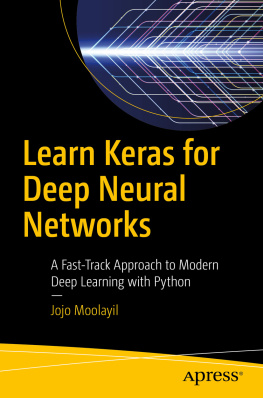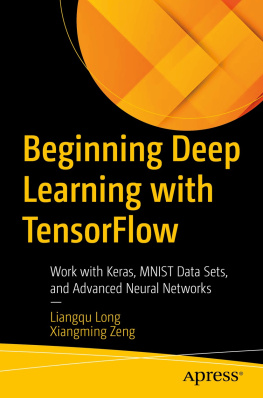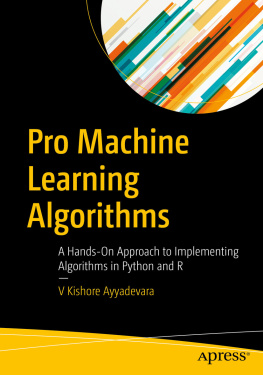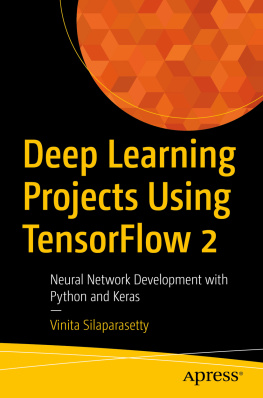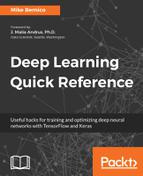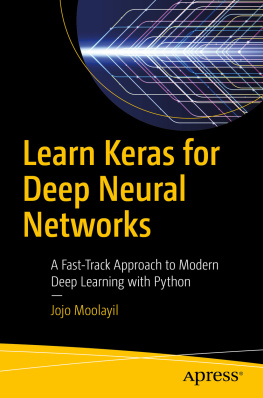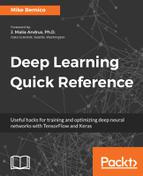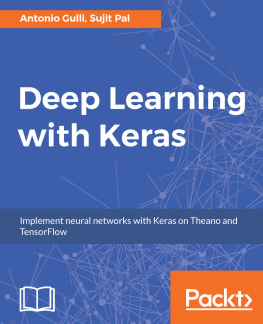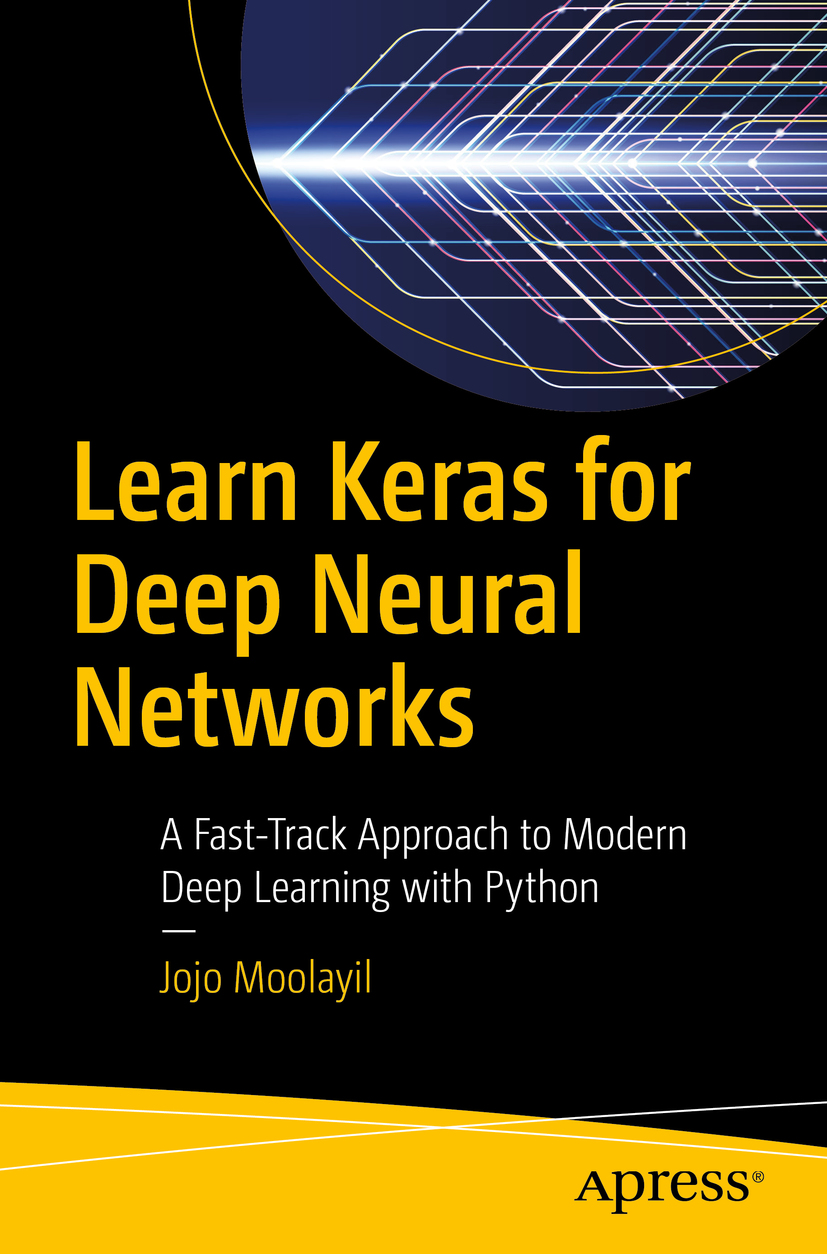Moolayil - Learn Keras for deep neural networks: a fast-track approach to modern deep learning with Python
Here you can read online Moolayil - Learn Keras for deep neural networks: a fast-track approach to modern deep learning with Python full text of the book (entire story) in english for free. Download pdf and epub, get meaning, cover and reviews about this ebook. City: New York;NY, year: 2018;2019, publisher: Apress, genre: Home and family. Description of the work, (preface) as well as reviews are available. Best literature library LitArk.com created for fans of good reading and offers a wide selection of genres:
Romance novel
Science fiction
Adventure
Detective
Science
History
Home and family
Prose
Art
Politics
Computer
Non-fiction
Religion
Business
Children
Humor
Choose a favorite category and find really read worthwhile books. Enjoy immersion in the world of imagination, feel the emotions of the characters or learn something new for yourself, make an fascinating discovery.
- Book:Learn Keras for deep neural networks: a fast-track approach to modern deep learning with Python
- Author:
- Publisher:Apress
- Genre:
- Year:2018;2019
- City:New York;NY
- Rating:5 / 5
- Favourites:Add to favourites
- Your mark:
Learn Keras for deep neural networks: a fast-track approach to modern deep learning with Python: summary, description and annotation
We offer to read an annotation, description, summary or preface (depends on what the author of the book "Learn Keras for deep neural networks: a fast-track approach to modern deep learning with Python" wrote himself). If you haven't found the necessary information about the book — write in the comments, we will try to find it.
The overall book comprises three sections with two chapters in each section. The first section prepares you with all the necessary basics to get started in deep learning. Chapter 1 introduces you to the world of deep learning and its difference from machine learning, the choices of frameworks for deep learning, and the Keras ecosystem. You will cover a real-life business problem that can be solved by supervised learning algorithms with deep neural networks. Youll tackle one use case for regression and another for classification leveraging popular Kaggle datasets.
Later, you will see an interesting and challenging part of deep learning: hyperparameter tuning; helping you further improve your models when building robust deep learning applications. Finally, youll further hone your skills in deep learning and cover areas of active development and research in deep learning.
At the end ofLearn Keras for Deep Neural Networks, you will have a thorough understanding of deep learning principles and have practical hands-on experience in developing enterprise-grade deep learning solutions in Keras.
What Youll Learn
Master fast-paced practical deep learning concepts with math- and programming-friendly abstractions. Design, develop, train, validate, and deploy deep neural networks using the Keras framework Use best practices for debugging and validating deep learning models Deploy and integrate deep learning as a service into a larger software service or product Extend deep learning principles into other popular frameworksWho This Book Is For
Software engineers and data engineers with basic programming skills in any language and who are keen on exploring deep learning for a career move or an enterprise project.
Moolayil: author's other books
Who wrote Learn Keras for deep neural networks: a fast-track approach to modern deep learning with Python? Find out the surname, the name of the author of the book and a list of all author's works by series.

